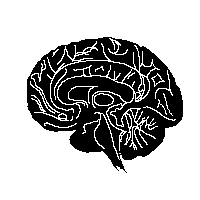
~ writing, programming, art ~
<< Previous next >>
9 September 2015
The Repurposed Mind
Science fiction has long dreamed of the brain-computer interface. I have found myself reconsidering the interface since I began working on a homemade EEG. Have you considered how wonderfully suited the physical body is to carrying out the mind’s intentions?
Due to the hands’ dexterity and speed, the mouse and keyboard provide excellent, virtually effortless interfaces with a computer. Despite its suitability and skill, many people, myself included, have dreamt of an interface in which we might simply think a command at the computer and have it obey.
I wonder, now, whether that might never prove as useful as modern researchers intend it to prove. Admittedly, where the body falls short this interface excels. There is no more brilliant hope than that the fully paralyzed may be able to interact with the world and even the internet via thought alone. This research must and will continue.
But, muscle control is largely autonomous. I need not concentrate to walk up stairs or to type. Within the range of my capacities, I need not even concentrate to play the piano. My emotions feed my inner music while my fingers walk it out on the keys. I have at times called the experience mysterious, and in a sense it is.
Dissimilarly, to train the mind to serve as a measurable output invariably requires concentration. So long as machines cannot think using the same mechanisms by which our brains think, the two will never communicate in the unbridled language of thought. Machines are, in this respect, far more like our bodies than like our minds; but, unlike the manner in which our minds control our bodies, our minds were never designed to manipulate cursors and letters.
Consequently, if one makes the reasonable assumption that any brain-computer interface within the foreseeable future will require concentration, one might then reasonably call all such systems impractical.
If the mind, any human's greatest gift, will be repurposed as an interface, it must be forever split between the object of its focus and the focus of the machine. No human could operate at full capacity under such a system: The machine’s action would be to them a perpetual day-dream, their own thoughts inherently and continually limited by the very nature of the interface, exchanging effort of body for effort of mind.